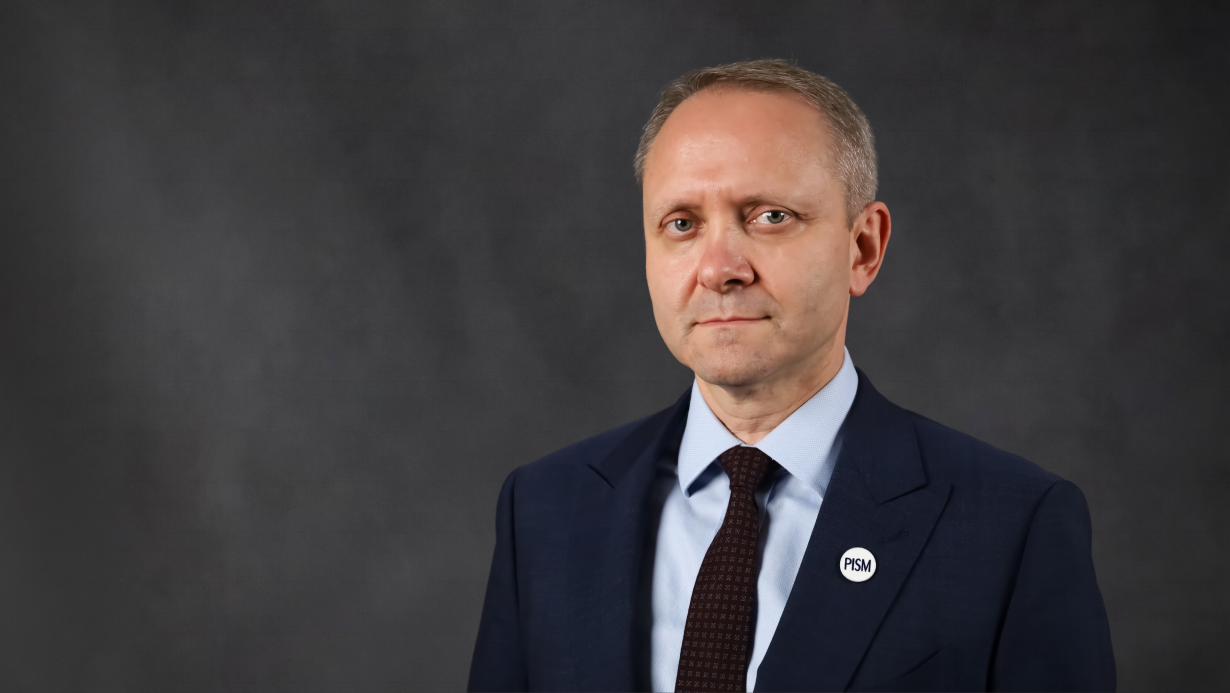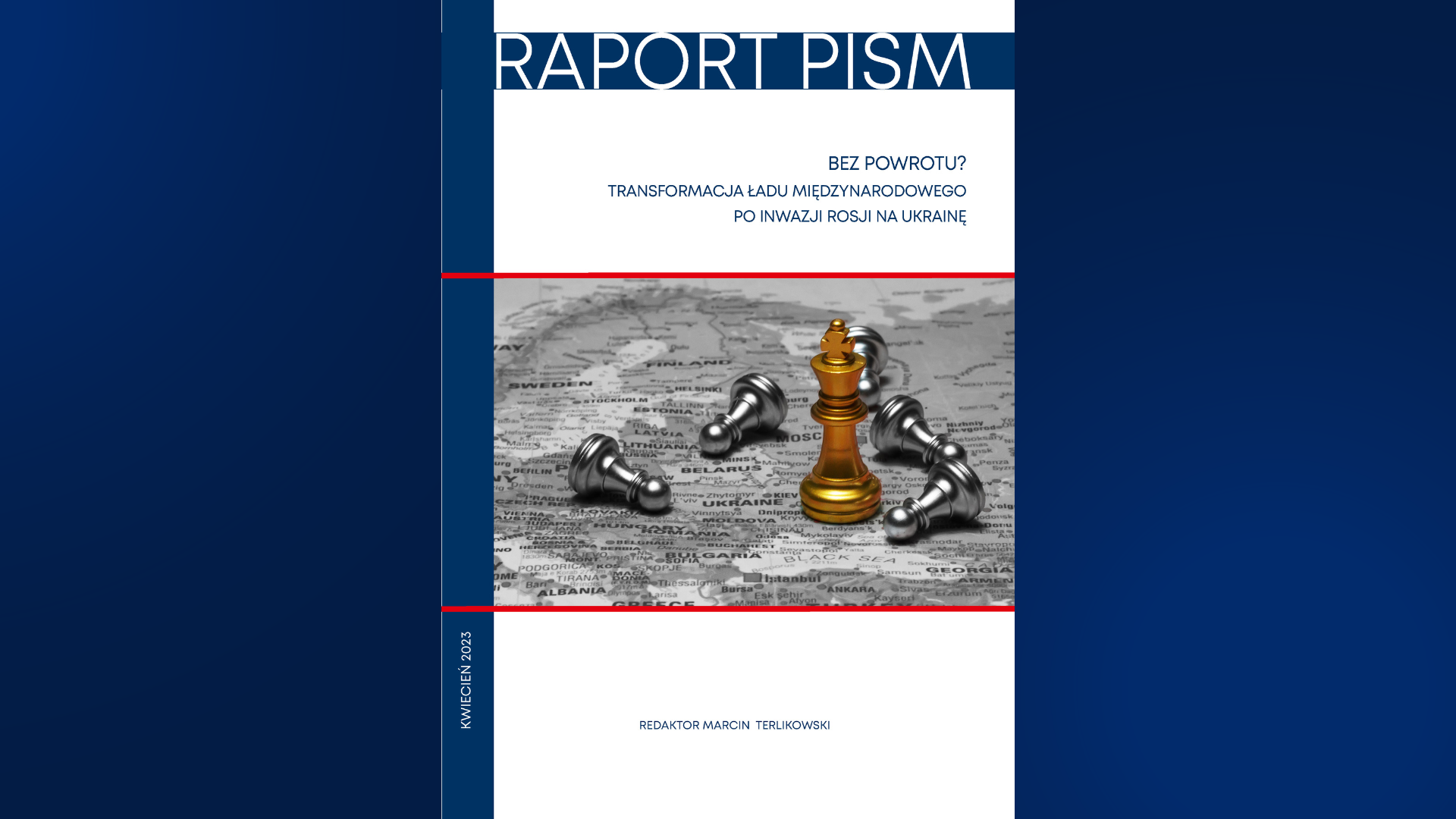NATO to Consider Increasing, Stabilising Support for Ukraine
At the July NATO summit in Washington, a decision will be made on increasing NATO’s role in coordinating support for Ukraine. New instruments such as a dedicated NATO fund and the Alliance’s “mission” for Ukraine could facilitate the provision of assistance in the coming years. Maintaining it for at least the next few years will be a condition for ending the war on favourable terms for Ukraine, curtailing Russia’s ambitions to recreate its sphere of influence, and reducing the risk of direct confrontation between Russia and NATO.
 Thomas Peter / Reuters / Forum
Thomas Peter / Reuters / Forum
During the meeting of NATO foreign ministers on 3-4 April, NATO Secretary General Jens Stoltenberg called for an increased role for NATO in providing long-term support to Ukraine. For this purpose, he proposed the creation of a NATO fund worth $100 billion that would enable financing for Ukraine for the next five years. The ministers decided to launch the formal planning process (NAC Initiating Directive), which usually precedes the establishment of a NATO mission. Hungarian Foreign Minister Péter Sijarto stated that Hungary opposes transforming NATO into an offensive alliance, suggesting that providing military assistance through NATO would be an aggressive action against Russia.
The Need to Increase the Role of NATO
So far, the U.S. has not wanted to coordinate support for Ukraine through the Alliance to limit the risk that NATO becomes a party to the conflict, which could lead to direct confrontation between Russia and the Alliance. Therefore, in April 2022, the U.S. created the Ukraine Defense Contact Group (the so-called Ramstein format), which was joined by over 50 countries, including all NATO members and more than 20 other states. NATO’s role has been limited to coordinating part of the non-lethal support to Ukraine (fuel, military food rations, medical aid, uniforms, body armour, etc.), financed through the Comprehensive Assistance Package (CAP), created in 2016, which, according to the declaration from the 2013 Vilnius summit, is to be transformed into a multi-annual instrument. The value of aid provided through CAP increased from several million dollars in 2021 to $500 million in 2023, but it is negligible compared to the bilateral military support provided after the full-scale Russian invasion of Ukraine by the United States ($46 billion) or EU members ($37 billion in total).
Although the American authorities claim that the Ramstein format is effective and allowed for building a coalition that goes beyond Alliance members, a change in U.S. policy towards Ukraine could reduce its importance. Problems in the U.S. Congress with the adoption of the last financial package for Ukraine indicate a rising risk of limiting or stopping American support. Donald Trump’s statements that he would “end the war in 24 hours” if elected president again in November point to the possibility he may withhold aid to Ukraine and force it to accept Russian conditions.
Problems with providing adequate support to Ukraine have allowed Russia to take the strategic initiative in recent weeks. Thanks to the significant advantage in firepower—about 5:1 in artillery shells—it has been achieving tactical successes, forcing Ukrainian troops to withdraw and shorten defensive lines. The Russian authorities are convinced that Western aid will weaken over time and Ukraine, without the necessary resources, will be forced to capitulate, accept territorial losses, neutrality, and demilitarisation. The renewed sense of victory and exposure of the weaknesses of the Western coalition could encourage Russia to intensify threats to European countries in order to achieve the goals formulated in the December 2021 ultimatum, in which Russia demanded, among other things, that the U.S. and NATO withdraw troops from Central and Eastern Europe.
Will There Be a NATO mission?
The launch of the planning process by the foreign ministers is intended to allow the NATO military commander (SACEUR) to develop possible options for increasing support for Ukraine within the Alliance. Institutionalising a larger part of the military aid would increase the chances of maintaining it despite political changes in individual countries. NATO does not plan to send troops to Ukraine, but growing commitments to Ukrainian reforms may require sending experts to the country due to problems with Ukrainian personnel traveling abroad. Although the initiated procedure usually leads to the establishment of a NATO mission, there are significant differences of opinion within the Alliance regarding the use of that term. Some countries fear that the creation of such a mission will be used by Russia as potent propaganda to accuse NATO of planning to send troops to Ukraine, which may increase public opposition to the continuation of aid. However, France, but also other countries, see the benefits of signalling that the threat of a Ukrainian defeat may force Western countries to send troops to Ukraine. In this way, they are trying to complicate Russian calculations and discourage Russia from resuming a large-scale offensive.
A New Fund for Ukraine
The creation of a new fund would guarantee stable and predictable financing of Ukraine’s defence capabilities in the coming years. This is a necessary condition to persuade the Russian leadership to abandon its maximalist goals and enter into negotiations on terms acceptable to Ukraine. The U.S. and most NATO countries do not have a specific strategy for ending the war. Their policy is based mainly on three broad actions: assurances that they will support Ukraine for “as long as necessary”, practical strengthening of Ukraine’s defence capabilities, and imposing costs on Russia mainly through sanctions. These activities are supported by bilateral agreements with Ukraine, the signing of which was announced by 32 countries and signed by nine so far. However, these agreements do not specify the financial scale of support beyond 2024, only the scope of political and military cooperation in the next 10 years. Fulfilling promises of future military support, which now have the form of commitments to deliver certain types of weapons and capabilities, will require multi-billion dollar investments. Creation of the new financial instrument would reduce the risk that these investments will not be made or will be too low to allow Ukraine to effectively defend itself.
The fund could also increase the chances of maintaining U.S. support for Ukraine. If it was based on similar principles to the common NATO budget, to which members contribute in proportion to their GDP (except for Germany, which contributes the same amount as the U.S.), it would ensure a more equal distribution of costs among the Allies. Since the American contribution would amount to about 16%, it would be more difficult to make accusations that the U.S. is doing much more than other allies, which could be used by a new administration as an excuse to limit support for Ukraine and reduce involvement in European security.
Reforms and Ukraine’s Membership in NATO
NATO taking greater responsibility will be an essential element in bringing Ukraine closer to membership in the Alliance. This issue revealed deep divisions in NATO before the summit in Vilnius last year. Ukraine, supported by some countries, insisted on formulating clear membership criteria and inviting it to NATO. Some countries feared that this would lead to the admission of Ukraine during the ongoing conflict with Russia and, as a result, to a direct confrontation between Russia and the Alliance. Instead, it only announced that Ukraine would not have to go through the Membership Action Program (MAP), which was intended to facilitate a candidate country’s adaptation to NATO standards. At the same time, the Allies announced that Ukraine’s admission would be possible after it meets the necessary conditions and with the approval of all countries. Although the withdrawal from MAP allows NATO to indicate that the path to membership has been shortened in the procedural dimension, Ukraine still needs to carry out the necessary reforms. At the same time, the Allies agreed in Vilnius that NATO foreign ministers would assess Ukraine’s progress on the road to NATO. The main mechanism for coordinating reforms will be the Joint Analysis Training and Education Center (JATEC), the establishment of which in Bydgoszcz was approved by the Alliance in February this year. JATEC will support the development of interoperability of the Ukrainian armed forces with NATO troops, as well as security sector reforms, among other things. It can also be used to coordinate the reconstruction and modernisation of training and educational infrastructure destroyed as a result of hostilities. If Ukraine implements the necessary reforms, NATO will have to formally approve it at the ministerial level. This decreases the risk that the lack of reforms will be used as an excuse to block accession or that Ukraine’s status will become the subject of negotiations with Russia to end the conflict. At the same time, it will increase pressure on individual members to seek internal political consensus on Ukraine’s future in the Alliance and facilitate the political consensus in NATO for enlargement.
Conclusions and Recommendations
- The achievement of Russia’s strategic goals towards Ukraine would be the first time since the end of the Cold War when a major power was able to enforce a change in the European security architecture and establish a sphere of influence, with long-term negative consequences for European and global security. While the priority at the NATO anniversary summit will be to avoid divisions and demonstrate unity, the strategic risks associated with Russia’s victory in Ukraine should prompt the Allies to present an ambitious package of long-term support for Ukraine. This package should include at least the creation of a dedicated NATO fund and a NATO mission for Ukraine. Building consensus in the Alliance may be facilitated by the argument that the NATO mission to Ukraine does not increase the risk of the Alliance being drawn into a conflict, just as the existing EU mission does not create such a risk.
- The Alliance should supplement the political declaration regarding the future of Ukraine by stating that undermined territorial integrity cannot be an obstacle to NATO enlargement. This will be a signal that, through its policy of aggression and occupation, Russia will not enforce a change in the European security architecture and will not create a new sphere of influence in Europe. Such a declaration may also reduce the risk that after Ukraine introduces the necessary reforms and the conflict is frozen or peace negotiated, some countries will use the occupation of Crimea and eastern Ukraine as a pretext for delaying Ukraine’s accession.
- To fully exploit the potential of NATO missions, coordination between NATO and the EU will be necessary. Since the EUAM mission (EU Advisory Mission in Ukraine) is responsible for supporting reforms of the civilian part of the security sector, activities within NATO should focus on the reform of military structures and institutions. Although another mission, EUMAM (EU Military Assistance Mission), is training thousands of Ukrainian soldiers in the EU, these troops are already trained in accordance with NATO standards. However, it will be important to adopt procedures enabling the assessment of progress in the development of interoperability as part of reforms on the way to membership in the Alliance.
- It will be in the interest of Poland and countries that support Ukraine’s membership in NATO to use the potential of the JATEC to implement reforms in the Ukrainian security sector. Poland’s influence on the speed and type of reforms implemented by Ukraine will depend on the scale of expert and financial involvement in JATEC. The opportunities for Polish companies for contracts related to the reconstruction of Ukrainian infrastructure will also depend on the pace and scale of involvement.




.jpg)
.jpg)